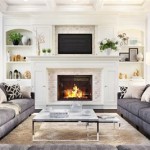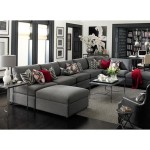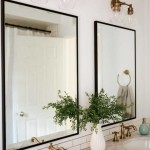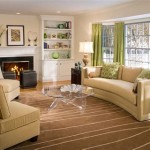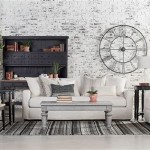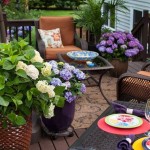How To Decorate A Great Room With A Fireplace
The great room, often the heart of a home, presents a unique decorating challenge. Its multi-functional nature requires a design that accommodates various activities, from relaxed gatherings to formal entertaining. A fireplace, frequently a focal point in a great room, offers both an opportunity and a constraint. This article will explore effective strategies for decorating a great room with a fireplace, creating a cohesive and inviting space.
Establishing a Focal Point: While the fireplace naturally draws the eye, the goal is to create a balanced arrangement. Furniture placement plays a crucial role. Positioning a sofa or a pair of armchairs directly facing the fireplace establishes a clear conversational area. A large rug can further define this space, anchoring the furniture and adding warmth. Avoid obstructing the fireplace with oversized furniture or décor. Maintain clear sightlines to allow the fireplace to remain a prominent feature.
Balancing Functionality and Aesthetics: A great room must cater to diverse needs. Consider incorporating designated zones for different activities. A reading nook near a window, a dining area adjacent to the kitchen, and a media area centered around the fireplace can coexist harmoniously within a single open space. Utilize furniture placement and area rugs to delineate these zones without compromising the room's open feel.
Selecting a Design Style: The chosen design style will inform all decorating decisions, from furniture selection to color palettes. A rustic aesthetic might incorporate natural materials, such as stone and wood, with warm earth tones and comfortable, oversized furniture. A modern design might feature clean lines, minimalist décor, and a neutral color scheme with bold accent pieces. Consider the architectural style of the home and the existing décor when selecting a design style for the great room.
Utilizing Color and Texture: Color plays a significant role in setting the mood and atmosphere of a room. Light, neutral colors can make a space feel larger and brighter, while darker, richer colors can create a sense of intimacy and warmth. Introduce texture through textiles, such as throw pillows, blankets, and area rugs. Layering textures adds visual interest and depth to the space. Consider the existing fireplace materials when selecting colors and textures to ensure a harmonious blend.
Maximizing Natural Light: Natural light enhances the ambiance of any room. Keep window treatments minimal to allow maximum light penetration. Mirrors strategically placed throughout the room can reflect natural light, further brightening the space. If privacy is a concern, consider sheer curtains or blinds that allow light to filter through while maintaining privacy.
Incorporating the Fireplace Mantel: The fireplace mantel provides an opportunity to showcase personal style and add decorative elements. Consider the scale of the fireplace and the overall design style when selecting mantel décor. A collection of framed photos, artwork, or decorative objects can create a visually appealing focal point. Avoid overcrowding the mantel; maintain a balance between decorative elements and negative space.
Lighting Considerations: Layered lighting is essential in a great room. Ambient lighting, such as recessed lighting or a chandelier, provides overall illumination. Task lighting, such as floor lamps or table lamps, facilitates specific activities like reading or working. Accent lighting, such as sconces or uplighting, highlights architectural features or artwork. Consider installing dimmer switches to control the intensity of the lighting and create different moods.
Selecting Appropriate Furniture: Furniture selection should be guided by both functionality and aesthetics. Choose pieces that are comfortable and durable, able to withstand the demands of a high-traffic area. Consider the scale of the room and the fireplace when selecting furniture sizes. Avoid overcrowding the space with oversized furniture. Allow for ample circulation space between furniture pieces.
Adding Decorative Accents: Decorative accents are the finishing touches that personalize a space. Incorporate elements that reflect personal interests and hobbies. Plants, artwork, sculptures, and decorative objects can add visual interest and personality to the great room. Maintain a cohesive look by selecting accents that complement the chosen design style and color palette.
Maintaining Balance and Harmony: The key to a successful great room design is balance and harmony. Consider all elements, from furniture placement to color selection, to ensure a cohesive and inviting space. Avoid overcrowding the room with too much furniture or décor. Maintain a sense of visual balance by distributing visual weight evenly throughout the space.
Addressing Traffic Flow: Traffic flow is a critical consideration in a great room. Ensure that there is ample space for people to move freely throughout the room without obstacles. Arrange furniture to create clear pathways and avoid blocking doorways or walkways. Consider the placement of the fireplace in relation to traffic flow and arrange furniture accordingly.
By carefully considering these elements, one can create a great room that is both functional and aesthetically pleasing, a space that truly becomes the heart of the home, centered around the warmth and visual appeal of the fireplace.

Unique Great Room Fireplace Ideas For Cold Minnesota Winters

46 Stunning Living Room With Fireplace Design Ideas Farm House Family Remodel

36 Fireplace Decor Ideas Modern Mantel

40 Best Fireplace Décor Ideas Mantel

11 Appealing Living Room Designs With A Fireplace

75 Best Fireplace Ideas Designs In Every Style

75 Best Fireplace Ideas Designs In Every Style

How To Arrange A Living Room With Fireplace House Of Hipsters

101 Beautiful Living Rooms With Fireplaces Of All Types Photos Big Quality Room Furniture Large

Fireplace Design Ideas For Your Home Designcafe
